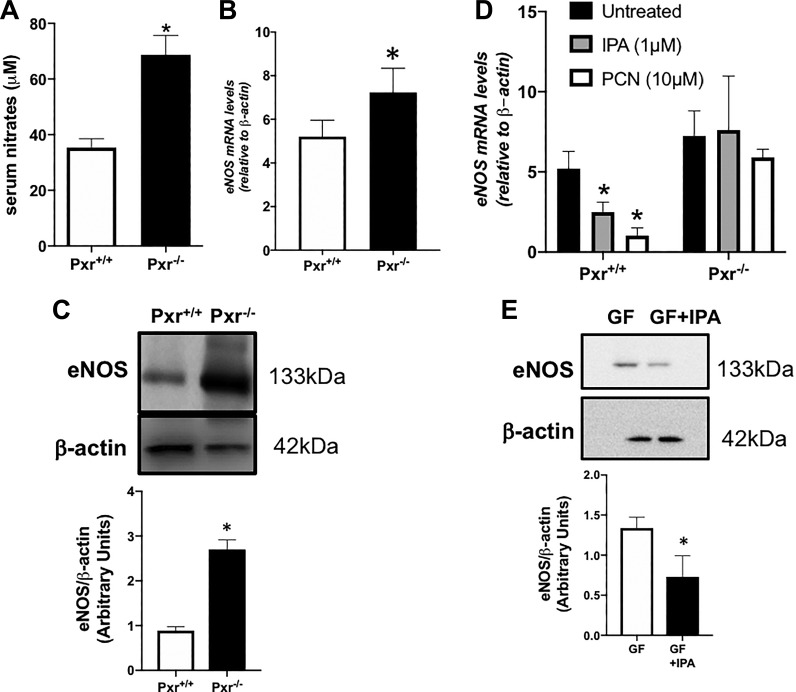Fig. 8.
Serum nitrates and endothelia nitric oxide synthase (eNOS) abundance are increased in pregnane X receptor (Pxr)−/− mice, whereas indole 3-propionic acid (IPA) and the PXR negatively regulate eNOS expression. Serum nitrates (A) and eNOS expression [mRNA (B) and protein (C)] were increased in aortic tissues isolated from Pxr−/− mice. For eNOS expression, the data are expressed relative to β-actin in each sample as quantified by quantitative PCR or Western blot densitometry (histograms below the representative gels). Data points are presented as means ± SE (bars); n = 6 for each group, Student’s t-test was used to compare Pxr+/+ and Pxr−/−. D: eNOS mRNA abundance was assessed in cultured primary aorta-derived endothelial cells isolated from Pxr+/+ and Pxr−/− mice treated with 2 PXR agonists [IPA − 1 μM, pregnenolone 16α-carbonitrile (PCN) − 10 μM] for 24 h. The abundance of eNOS is expressed relative to β-actin in each sample. Histograms are presented as means ± SE (bars); n = 4 for each group. E: Western blot analysis of eNOS abundance was done for aorta tissue from germ-free (GF) mice either supplemented (GF + IPA) or not (GF) with IPA. The abundance of eNOS relative to β-actin in each sample was quantified by densitometry (histograms below the gels, representative of 4 independently conducted analyses). Histograms are presented as means ± SE (bars); n = 4 for each group. *P < 0.05, Student’s t-test.

